Perennials are popular because they can bloom again season after season. They are not completely maintenance-free, however.
To propagate, perennials need to be divided regularly, cut back, fertilized, and pruned. With the proper care, they can be a beautiful addition to any yard or garden.
These are a few of our favorite options for planting perennials in a sunny, North Texas yard.
Bee Balm
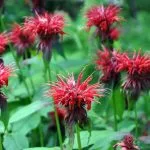
Bee Balm is a perennial in the mint family. Like its name suggests, it attracts bees, as well as other pollinators like hummingbirds and butterflies. It grows to be about 30-36 inches tall and blooms with red to wine colored flowers from June to August.
To keep it healthy, fertilize bee balm in its growing season, and divide it every 2-3 years in the early spring. Be sure to plant it immediately. It thrives in full sun with an even amount of moisture. Water every few days.
Skullcap/Primrose
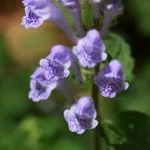
Another perennial that belongs to the mint family is the Skullcap. It is named for the fuschia flowers that resemble a medieval cap worn by men. It grows to about 8-12 inches in height and is a good plant for edging or groundcover.
Skullcap flowers from May to November and should be pruned in early spring. It does best in soil that is well-drained, and has low water needs once it is established.
Texas Gold Columbine
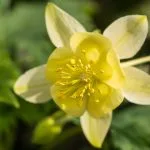
This bright yellow perennial is wonderfully heat tolerant, unlike the majority of its columbine relatives. In fact, its Texas-sized hardiness actually won it a Texas Superstar award from the Texas Agrilife Extension!
The Texas gold columbine boasts a bluish green foliage with large, cup-like blossoms. The flowers will really stand out as an eye-catcher in your landscape, due to the long, graceful spikes that extend from the main petals.
Lantana
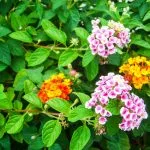
Lantana is a plant that is very popular in Texas. While it has vine-like characteristics, it is classified as a shrub. It is known for its clusters of small, bright flowers that can bloom in yellow, orange, white, red or purple.
While Lantana is a fragrant plant, it is not one everyone cares for. The fragrance, however, attracts butterflies and pollinators. It grows 6 ft high and wide and is relatively low maintenance. It can also be toxic to kids and pets, so plant with care.
Visit our Landscaping service page to learn how Evergreen Lawn & Landscape can help bring your landscaping vision to life.
Black-Eyed Susan
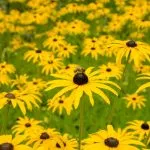
An easy to grow, classic perennial is the Black-Eyed Susan. It produces daisy-like yellow blooms in the summer through the fall. It can grow to 2 feet high and wide. It tolerates heat and dry conditions.
RELATED TIP: Plants to Grow During Winter
Spent blooms should be deadheaded every two weeks to prolong the blooming season. Divide in the spring as needed. Once established, it only needs water once or twice a week.
Texas Bird of Paradise
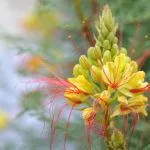
A more exotic option is the Texas Bird of Paradise, sometimes called the Yellow/Desert Bird of Paradise. Sometimes grown as a shrub, it can reach up to 4-8 feet tall and 3-5 feet wide.
This perennial boasts yellow blooms from May to September. It is a hardy plant that is heat and drought tolerant. It does well in most soils as long as they are well drained. Its bright blooms attract pollinators.
If you’re wondering which perennials to plant in the shade, check out Top Shade Perennials for North Texas.
Blackfoot Daisy
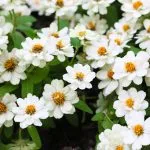
These mounded perennials are basically the flowers we all grew up drawing! With their large, flat petals and lemon yellow centers, you can almost see them smiling up at you.
Indeed, blackfoot daisies are prized for their classic appearance and honey-scented blossoms. Their growth pattern is low and bushy, making them a perfect filler for small spaces that need a touch of light and color.
Hardy Hibiscus Flare
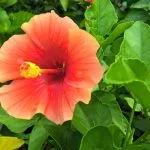
Hardy Hibiscus Flare is another exotic-looking flower that is relatively low maintenance. It comes in many varieties and colors but the ‘Flare’ variety was first bred in Texas. It grows as large as 4 feet tall and wide and has large fuschia flowers.
Hardy Hibiscus Flare will bloom from summer to the first frost under ideal conditions. It prefers well drained, fertile soil and should be mulched to maintain moisture.
Garden Phlox
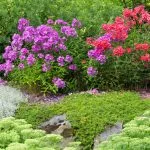
If you prefer a colorful perennial with a lengthy growing season, garden phlox is your gal. Her long, voluptuous clusters of tiny 5-petalled flowers creates a statement that is both bold and delicate.
Garden phlox produces white, pink, and purples flowers, that often have a much darker ring of color in the center. This plant is somewhat sensitive to mildew, so you may want to look out for cultivars that are specifically labeled as mildew-resistant.
Society Garlic
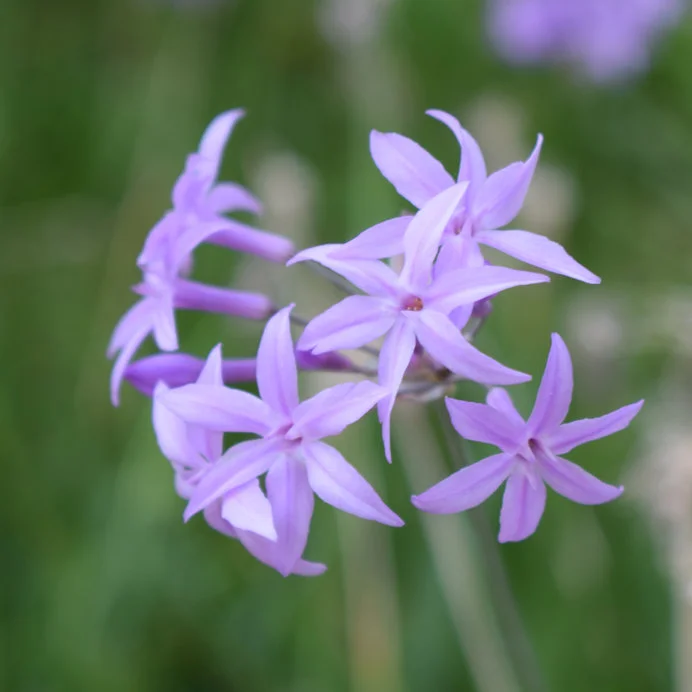
Classed as a shrub, a ground cover, and an herb, society garlic is an attractive addition to your garden. It grows to about two feet high, and produces small clusters of lavender, star-shaped flowers.
This plant gets its name from the notion that it can be consumed without giving a person the dreaded “garlic breath,” thus it is dubbed society garlic! The flowers are actually quite fragrant, and both the petals and foliage of this plant are edible.
Texas Rock Rose
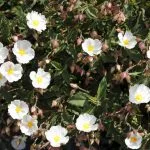
Texas Rock Rose also has hibiscus-shaped flowers that are small and pink. It is a popular accent plant, growing 1.5 to 4 feet tall. It is drought tolerant and not picky about soil type.
This perennial rose bush blooms spring through fall. A layer of mulch should be added to protect it through the winter and it can be pruned to keep it more compact in size.
RELATED TIP: 8 Best Fall Annual Flowers for North Texas
Fall Aster
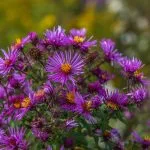
Fall Aster blooms in the fall, from late September to the first frost. It grows in a mound shape of about 2-3 feet wide and 1-2 feet tall. It has medium violet-blue flowers. It prefers sunny locations and is drought tolerant.
Fall Aster is appreciated for being disease- and pest-resistant. It should be thinned regularly to control the spread and is easy to divide.
Salvia Greggii
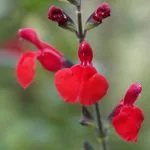
Also known as “autumn sage,” this evergreen shrub is a popular choice for lawns and gardens in the southwest. The foliage is lightly aromatic, and it remains a soft, medium green year-round.
The fragrant flowers are known to attract hummingbirds, and they are available in a full rainbow of colors. This is a classically “Texan” plant, as it is resistant to drought, heat, insects, and diseases.
Oxblood Lily
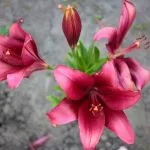
Another fall-blooming perennial is the Oxblood Lily. It has exotic vibes with its blood red flowers. These flowers are a hummingbird magnet. They are resistant to heat and drought, but do need spring rains to form foliage and flowers.
Oxblood lilies require 6-8 hours of full sun per day. They should be watered well the first year. They may only bloom a few seasons but can be separated every couple of years for a consistent supply of flowers. Fertilizing in the summer will help grow bigger blooms.
Yarrow
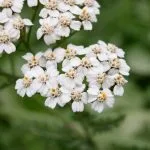
Yarrow is an herbaceous, flowering perennial found in gardens and herb gardens. It has herbal and medicinal uses in addition to being decorative. This plant is often used for edging. It has clusters of small flowers that come in a variety of colors.
Yarrow will bloom from early summer to early fall. They are popular as cut flowers, lasting for weeks in a vase. Yarrow is easy to care for, needing full sun and growing in a variety of soils. It can be divided every 2-3 years.
Plumbago
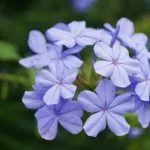
Plumbago is a profuse bloomer that is fast growing. It will produce bright blue blooms that are attractive to butterflies. They handle heat and humidity well, making them a good perennial for North Texas.
Our team of lawn care experts are happy to assist you with Seasonal Planting any day of the year.
Plumbago should be pruned a few times during the growing season to increase flower production. They should be fertilized with an acid based product like hibiscus food and planted in soil rich with organic matter. Plumbago is a good filler plant or used as a spiller as well.
There are many beautiful, flowering perennials available for North Texas that thrive in the heat and sun. Pick according to your needs and blooming seasons to have a beautiful yard all season long.

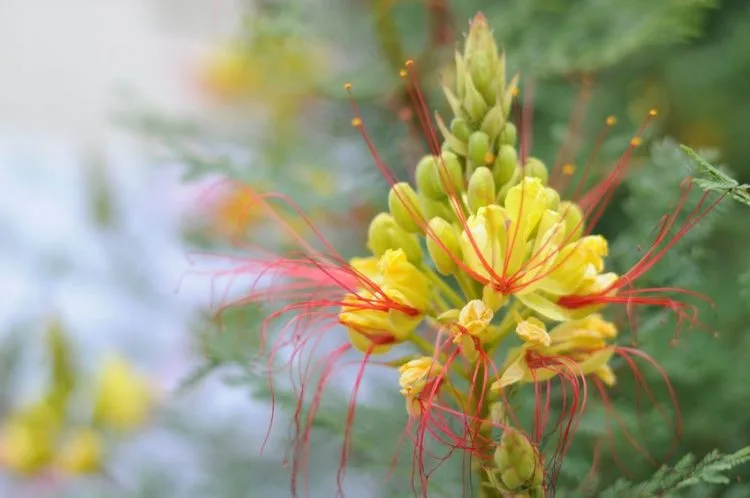

Comments (0)
Thanks for your comment!
Thanks for your feedback! Your comments have been successfully submitted! Please note, all comments require admin approval prior to display.
Error submitting comment!
There is a problem with your comment, please see below and try again.